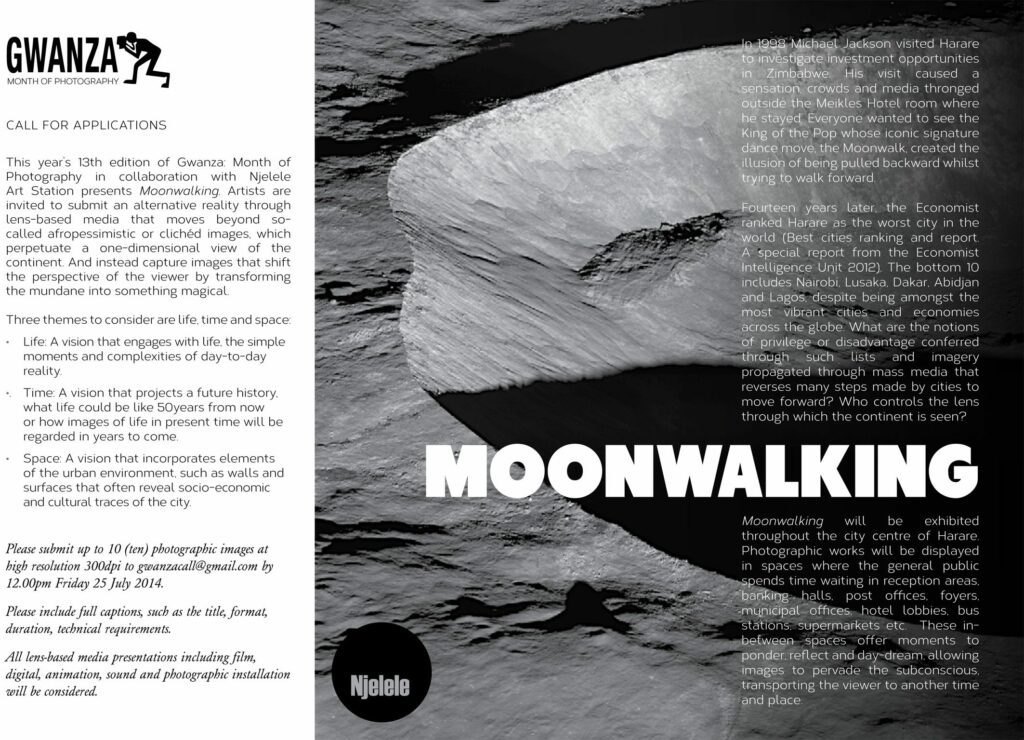Gwanza, Harare, Zimbabwe
25 Jul 2014

This year, Gwanza presents it’s 13th edition of the Month of Photography in collaboration with Njelele Art Station. Under the theme Moonwalking artists are invited to submit an alternative reality through lens-based media that moves beyond so-called afropessimistic or clichéd images, which perpetuate a one-dimensional view of the continent. And instead capture images that shift the perspective of the viewer by transforming the mundane into something magical.
The title Moonwalking refers to 1998, when Michael Jackson visited Harare to investigate investment opportunities in Zimbabwe. His visit caused a sensation, crowds and media thronged outside the Meikles Hotel room where he stayed. Everyone wanted to see the King of the Pop whose iconic signature dance move, the Moonwalk, created the illusion of being pulled backward whilst trying to walk forward.
Fourteen years later, the Economist ranked Harare as the worst city in the world (Best cities ranking and report. A special report from the Economist Intelligence Unit 2012). The bottom 10 includes Nairobi, Lusaka, Dakar, Abidjan and Lagos, despite being amongst the most vibrant cities and economies across the globe. What are the notions of privilege or disadvantage conferred through such lists and imagery propagated through mass media that reverses many steps made by cities to move forward? Who controls the lens through which the continent is seen?
Moonwalking will be exhibited throughout the city centre of Harare. Photographic works will be displayed in spaces where the general public spends time waiting in reception areas, banking halls, post offices, foyers, municipal offices, hotel lobbies, bus stations, supermarkets etc. These in-between spaces offer moments to ponder, reflect and day-dream allowing images to pervade the subconscious, transporting the viewer to another time and place.
CALL FOR APPLICATIONS:
Three themes to consider are life, time and space:
• Life: A vision that engages with life, the simple moments and complexities of day-to-day reality.
• Time: A vision that projects a future history, what life could be like 50years from now or how images of life in present time will be regarded in years to come.
• Space: A vision that incorporates elements of the urban environment, such as walls and surfaces that often reveal socio-economic and cultural traces of the city.
GUIDELINES:
Please submit up to 10 (ten) photographic images at high resolution 300dpi to gwanzacall@gmail.com by 12.00pm Friday 25 July 2014. Please include full captions, such as the title, format, duration, technical requirements.
All lens-based media presentations including film, digital, animation, sound and photographic installation will be considered.